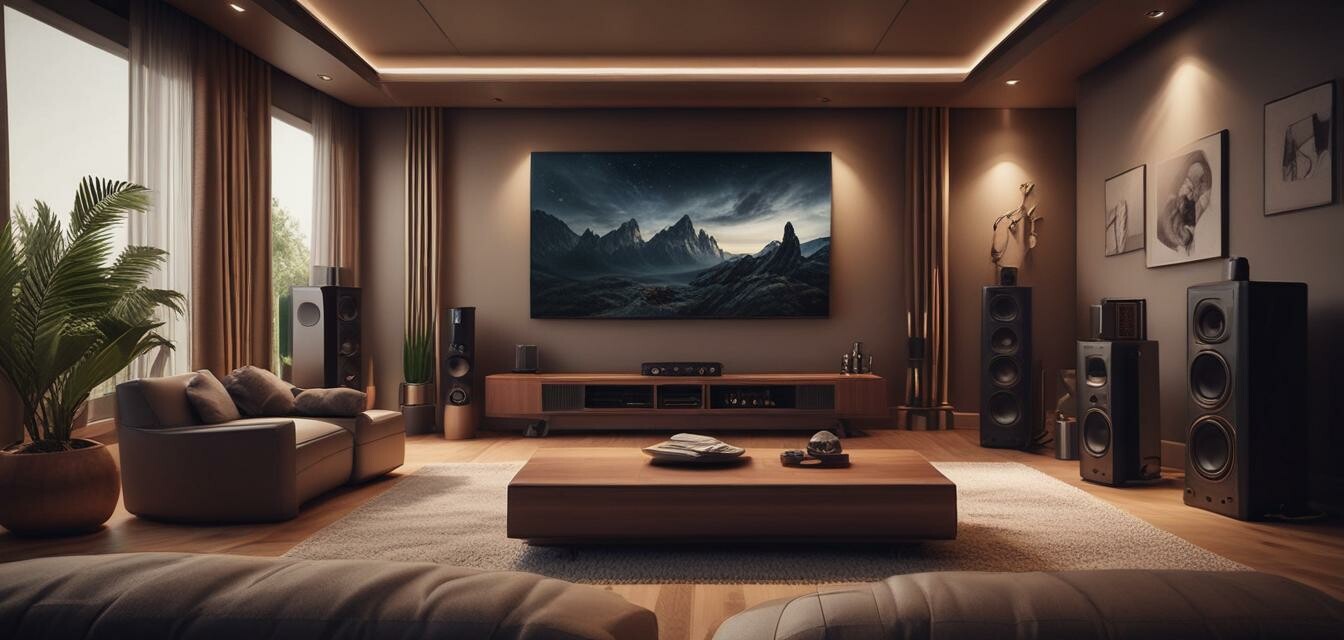
How to Maximize Sound for Home Theater Systems
- Position your speakers correctly for optimal sound distribution.
- Utilize room calibration features available in most modern AV receivers.
- Consider soundproofing your room to enhance audio quality.
- Experiment with different sound modes to find your preference.
- Upgrade your audio cables to ensure high-fidelity sound quality.
Optimizing the sound experience in your home theater system can significantly enhance your movie-watching and gaming fun. From correct speaker positioning to sound calibration techniques, we’ll explore advanced tips to help you get the most out of your audio setup.
Understanding Speaker Setup
The arrangement of speakers plays a crucial role in delivering immersive sound. Correct positioning ensures balanced audio distribution throughout the room.
Speaker Placement Tips
- Front Speakers: Position your left and right speakers at an angle of approximately 30 degrees from your main seating position.
- Center Speaker: Place it directly above or below your TV to provide clear dialog.
- Surround Speakers: Install them at ear level to the sides or slightly behind your seating area.
- Subwoofer: Experiment with placement; corners will enhance bass, while mid-wall locations offer more balanced sound.
Room Calibration Techniques
Most modern AV receivers come with built-in room calibration software. This feature analyzes your room's acoustics and optimizes the speaker settings accordingly.
Using Room Calibration Software
- Place the calibration microphone at your main listening position.
- Follow the instructions on your AV receiver to perform the calibration.
- The system will emit test tones and measure how your room affects audio.
- Review the suggested changes and fine-tune if necessary.
Soundproofing Your Home Theater
To truly maximize sound quality, consider soundproofing elements. Soundproofing minimizes external noise interference and enhances overall audio experience.
Soundproofing Options
- Use thick curtains or acoustic paneling on walls.
- Install carpet or rugs to absorb sound.
- Seal gaps in windows and doors.
Experimenting with Sound Modes
Many audio systems come with different sound modes (e.g., Movie, Music, Game). Experimenting with these modes can yield preferred sound experiences based on what you are watching.
Review of Essential Audio Gadgets
Choosing the right audio gadgets can make a big difference in your sound quality.
TOPTRO TR27 Mini Projector
A portable projector supporting 4K and native 1080P, perfect for creating a cinematic experience in your home theater.
Learn MoreUpgrading Audio Cables
High-quality cables contribute to sound fidelity. Low-quality cables may introduce noise and degrade sound quality.
Types of Audio Cables to Consider
- HDMI Cables: Ensure you use high-speed HDMI cables for best results.
- Speaker Wires: Use thicker gauge wires for longer runs to minimize signal loss.
- Optical Cables: Great for connecting devices without interference.
Conclusion
Maximizing sound for your home theater system involves careful planning and consideration. By following these guidelines, you can create an audio environment that enhances your viewing experience.
Beginner's Tips for Home Theater Audio
- Start with the basic setup first before upgrading components.
- Don't forget to calibrate your audio settings after any changes.
- Take notes on your settings so you can easily replicate your ideal setup.
Pros
- Immersive audio experience enhances movies and games.
- Flexible setups to suit different room configurations.
- Calibration ensures optimal performance.
Cons
- Set up can be complex for beginners.
- Quality audio equipment can be expensive.
- May require additional soundproofing efforts.
Further Reading
To learn more about enhancing your electronic devices, visit our related articles:

